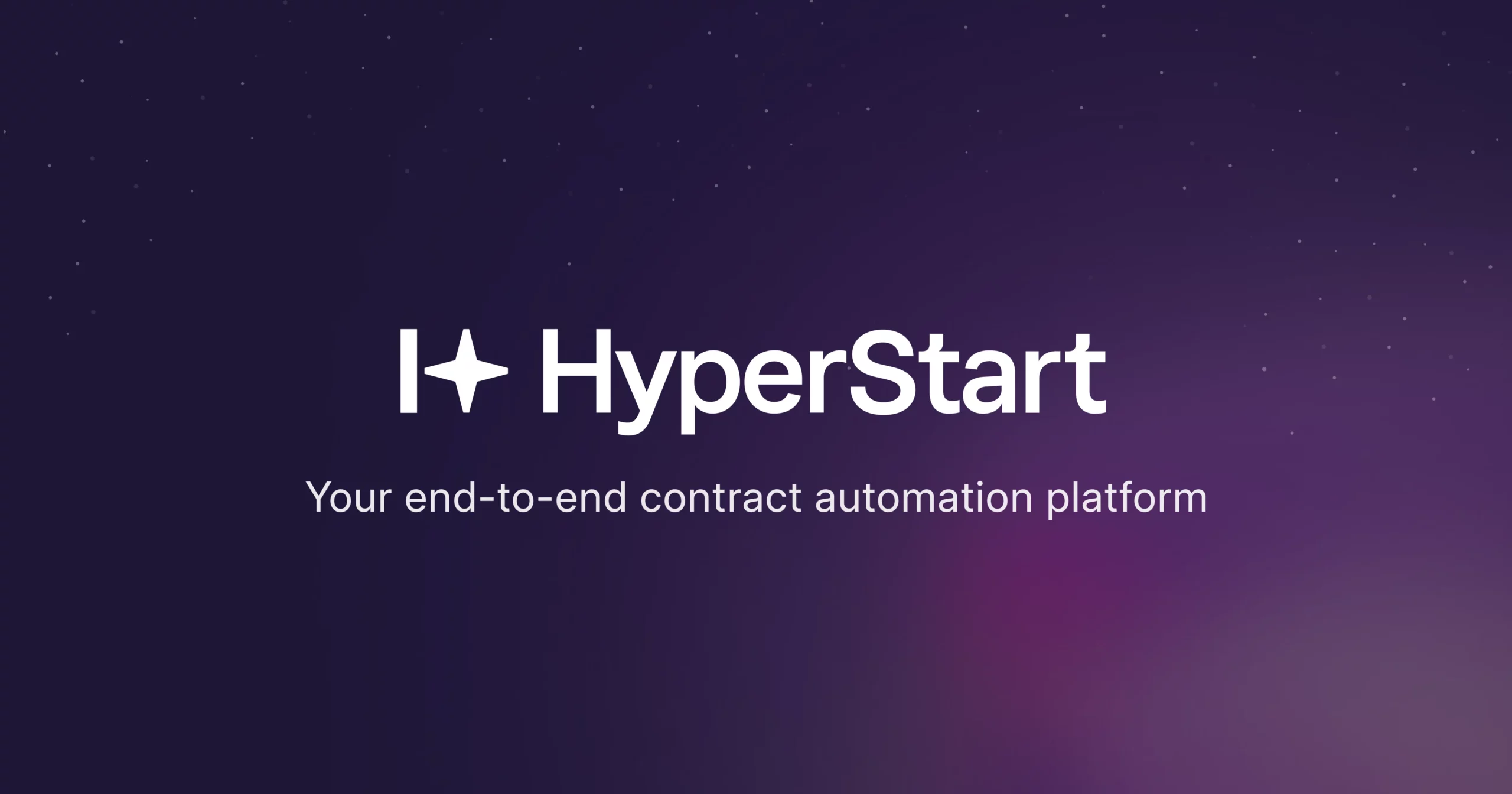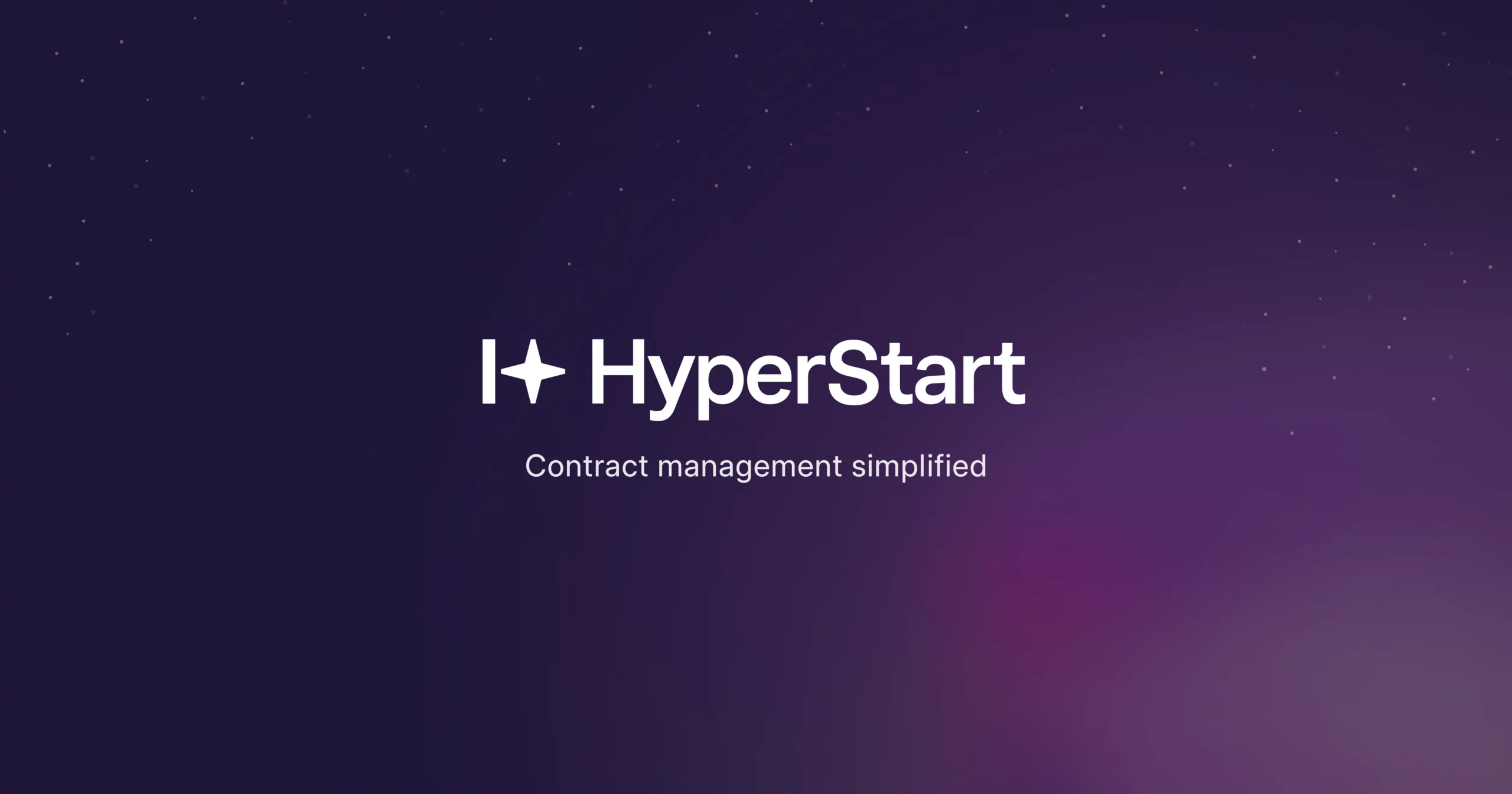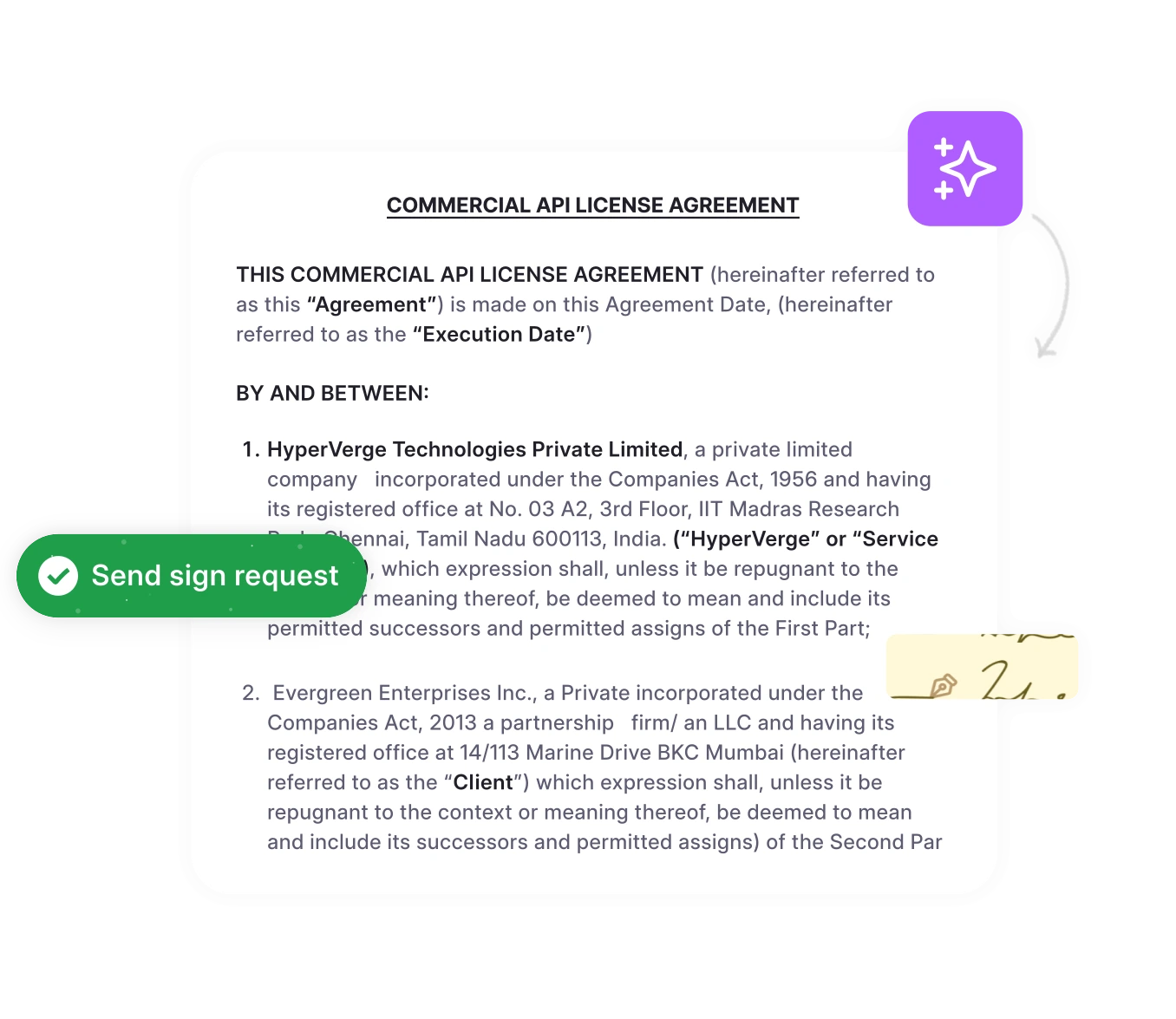A contract schedule sets the turnaround time for a quick and successful agreement execution, yet most organizations struggle with scattered timeline information and missed deadlines. Legal teams spend countless hours manually tracking deliverables, payment milestones, and project timelines across multiple systems.
Modern contract management necessitates systematic approaches to contract schedule oversight that surpass manual spreadsheets and email reminders.
This comprehensive guide explores what contract schedules are, their different types, and common management challenges. We’ll also cover modern AI-powered solutions that transform schedule management from chaotic to organized.
What is a contract schedule?
A contract schedule is a detailed attachment to a legal agreement that outlines specific timelines, deliverables, payment milestones, or asset lists that support the main contract terms. Unlike the contract body, which focuses on legal obligations and terms, schedules contain factual, time-sensitive information that’s too detailed for the primary document.
Contract schedules serve three essential purposes. They organize complex timeline information in a clear, accessible format. They provide specific dates, quantities, and deliverables that parties must meet. They create enforceable obligations that are legally binding as part of the overall agreement.
Common contract schedule examples include construction project timelines showing work phases and completion dates, payment schedules detailing installment amounts and due dates, and software delivery schedules outlining feature releases and testing milestones. Contract metadata extracted from schedules becomes critical for tracking performance and ensuring compliance across all agreement components.
What are the different types of contract schedules?
Contract schedules vary significantly depending on the industry, the complexity of the agreement, and the specific business needs. Understanding these variations enables legal teams to select suitable formats and manage expectations effectively.
| Schedule Type | Primary Purpose | Common Industries | Key Elements |
| Project Timeline | Work sequencing and deadlines | Construction, software, consulting | Milestones, dependencies, completion dates |
| Financial Payment | Payment amounts and timing | Real estate, equipment, services | Payment amounts, due dates, penalties |
| Deliverable & Milestone | Performance tracking | Manufacturing, software, R&D | Deliverables, quality standards, acceptance criteria |
| Asset & Property | Item identification and transfer | M&A, leasing, procurement | Asset lists, specifications, transfer dates |
Each schedule type requires different management approaches and monitoring systems to ensure successful contract execution.
1.Project timeline schedules
Project timeline schedules map out work sequences, dependencies, and completion dates for complex initiatives. These schedules typically include task descriptions, estimated durations, responsible parties, and interdependencies between different work streams.
According to the Federal Highway Administration, using accurate critical path method scheduling methods reduces contractor delay risk by setting realistic maximum contract times.
Construction contracts rely heavily on timeline schedules to coordinate multiple trades and ensure proper sequencing. Software development agreements use sprint schedules and release timelines to track feature delivery. In such a case, the statement of work documents often include detailed project schedules that become legally binding upon signature.
Critical elements include buffer time for unexpected delays, clear dependency mapping, and regular checkpoint reviews. Missing project deadlines can trigger penalty clauses or contract termination rights.
2. Financial payment contract schedule
Financial payment schedules detail monetary obligations, including amounts, timing, and payment methods. These schedules protect both parties by establishing clear expectations and creating enforceable payment terms that are mutually beneficial.
Payment schedules typically include milestone-based payments tied to the completion of deliverables, recurring payments for ongoing services, and final payments upon project acceptance. Late payment penalties and early payment discounts are frequently incorporated.
Contract payment schedule templates help standardize terms across agreements while allowing for customization to meet specific deal requirements.
3. Deliverable and milestone contract schedule
Deliverable schedules define what parties must produce, when items are due, and how acceptance will be determined. These schedules create accountability and provide measurable success criteria.
Contract performance management relies heavily on deliverable tracking to ensure both parties meet their obligations. Quality standards, testing procedures, and acceptance criteria must be clearly defined.
Milestone schedules break large projects into manageable phases with specific completion criteria and payment triggers.
4. Asset and property contract schedule
Asset schedules provide detailed inventories of equipment, intellectual property, real estate, and other items included in the agreement. These schedules ensure accurate transfer documentation and establish ownership clarity.
Merger and acquisition agreements use extensive asset schedules to document what’s being acquired. Lease agreements include property condition schedules and equipment lists. Procurement contracts detail specifications and delivery requirements for purchased items.
How do contract schedules differ from exhibits and addendums?
Understanding the distinctions between contract attachments prevents confusion and ensures proper legal treatment. Each attachment type serves different purposes and has varying levels of integration with the main agreement.
| Attachment Type | Primary Purpose | Legal Integration | Timing | Typical Content |
| Schedule | Timeline and deliverable details | Integral part of contract | Created with original contract | Dates, milestones, payments, assets |
| Exhibit | Reference documents and specifications | Supporting material | Created with original contract | Technical specs, drawings, forms |
| Addendum | Contract modifications | Modifies existing terms | Added after contract execution | Changes, additions, clarifications |
Schedules are typically numbered (Schedule 1, Schedule 2) and referenced directly in contract clauses. They become enforceable obligations upon the execution of the contract.
Exhibits provide supporting information but may not create direct obligations. Technical specifications, product catalogs, and reference materials are common exhibit content.
Addendum vs amendment distinctions become crucial when parties need to modify existing agreements. Understanding these differences ensures that proper contract documentation and legal enforceability are achieved.
What are the biggest challenges with contract schedule management?
Manual contract schedule management creates significant operational and financial risks for organizations. Legal teams face mounting pressure to track multiple timelines while business teams struggle with poor visibility into critical deadlines.
1. Scattered schedule information across multiple systems
Organizations typically store contract schedules across various platforms, including email attachments, shared drives, project management tools, and individual spreadsheets. This fragmentation makes it impossible to maintain centralized visibility or ensure information accuracy.
Sales teams might track customer delivery schedules in CRM systems while legal maintains separate contract deadline spreadsheets. Finance departments monitor payment schedules in accounting software. The result is duplicated effort and conflicting information.
Solution
Contract tracking systems provide centralized repositories where all schedule information lives in one accessible location. AI-powered platforms automatically extract schedule data from contract documents and maintain synchronized information across all systems.
2. Missed deadlines and poor visibility
Poor schedule visibility leads to missed renewals, late deliverables, and pressured business relationships. Organizations lose significant revenue when automatic renewal deadlines pass unnoticed or payment milestones are forgotten.
Manual tracking systems fail when team members leave, responsibilities change, or workloads increase. Spreadsheet-based tracking becomes unreliable as contract volumes grow beyond individual capacity to monitor.
Solution
Automated alert systems provide proactive notifications for upcoming deadlines, renewal dates, and milestone requirements. Contract renewal management prevents the $200K+ annual losses that organizations typically experience from missed renewal opportunities.
3. Manual tracking consumes legal resources
Legal professionals spend approximately 80% of their time on administrative tasks including schedule monitoring, deadline tracking, and status reporting. This administrative burden prevents strategic legal work and reduces overall team productivity.
Manual schedule management requires constant attention to calendar updates, stakeholder communications, and progress monitoring. Legal teams become reactive rather than proactive in their contract oversight.
Solution
Contract management automation eliminates manual tracking requirements and enables legal teams to focus on strategic activities. AI-powered systems automatically monitor schedules, send notifications, and provide real-time status updates without human intervention.
Once a contract has been executed, the system will generate automatic reminders to the contract manager regarding key aspects of the contract or related records. For example, it will generate reminders when the renewal period for the contract is approaching or when certificates of insurance or other required documents must be updated.
– Read
4. Lack of real-time updates and collaboration
Traditional schedule management doesn’t provide real-time updates when timelines change or milestones are completed. Team members work with outdated information, leading to coordination problems and duplicated efforts.
Cross-functional collaboration suffers when different departments maintain separate schedule information. Sales, legal, finance, and operations teams need synchronized access to current timeline data.
Solution
Integrated workflow systems provide real-time schedule updates and collaborative access for all stakeholders. Cloud-based platforms ensure everyone works with current information and can contribute updates as schedules evolve.
How to structure and format contract schedules
Effective contract schedule structure requires careful planning and attention to both legal requirements and operational practicality. Well-designed schedules prevent disputes and enable efficient execution monitoring.
Step 1: Determine what belongs in schedules vs the main contract body
Schedule scope determination involves identifying what information belongs in schedules versus the main contract body. Detailed timelines, specific quantities, and complex deliverable lists typically warrant separate schedule treatment.
Move factual, time-sensitive data to schedules while keeping legal obligations and terms in the main contract.
Step 2: Select format based on complexity and project needs
Format selection depends on information complexity and stakeholder needs. Simple timelines work well for straightforward delivery schedules.
Complex projects require detailed tables with dependencies, responsibilities, and acceptance criteria.
Owners and Engineers need to specify what they want to receive in the way of schedules and updates. The scheduling requirements of the contract should be tailored to the size, complexity and length of the project, as well as the sophistication of the contractors who will be expected to do the work. One size does not fit all!
– Read
Step 3: Consider audience requirements and stakeholder needs
Technical teams need detailed specifications while executives prefer high-level milestone summaries. Multi-level schedules can serve different stakeholder needs within the same agreement.
Design formats that provide appropriate detail levels for each user group.
Step 4: Standardize formats and create reusable templates
Contract management best practices recommend standardizing schedule formats across contract types to improve consistency and reduce confusion.
Template development saves time and ensures comprehensive coverage across all agreements.
Step 5: Establish clear contract clause references
Schedule integration requires clear referencing in contract clauses that establish legal obligations and consequences. Contract clauses must clearly reference attached schedules and establish their legal status as binding obligations.
Contract language should specify how schedule conflicts will be resolved and what happens when timelines change.
Step 6: Plan update procedures and version control
Define who can authorize modifications, what approval processes are required, and how changes will be documented. Version control becomes critical as schedules evolve throughout contract performance.
Establish clear numbering systems and change tracking procedures that maintain audit trails for compliance purposes.
Transform contract schedule management with HyperStart’s AI automation
Effective contract schedule management requires modern technology solutions that eliminate manual tracking and provide proactive monitoring capabilities. Organizations that continue relying on spreadsheets and email-based systems face mounting risks of missed deadlines and lost opportunities.
AI-powered contract management transforms schedule tracking from reactive monitoring to proactive management. HyperStart’s platform automatically extracts schedule information from contract documents, provides intelligent deadline alerts, and integrates with existing business systems for seamless contract management workflow automation.
HyperStart’s contract tracking software delivers 80% faster contract processing and ensures organizations never miss critical renewal deadlines again. Legal teams can focus on strategic work while AI handles administrative schedule monitoring, creating more efficient operations and better business outcomes.












